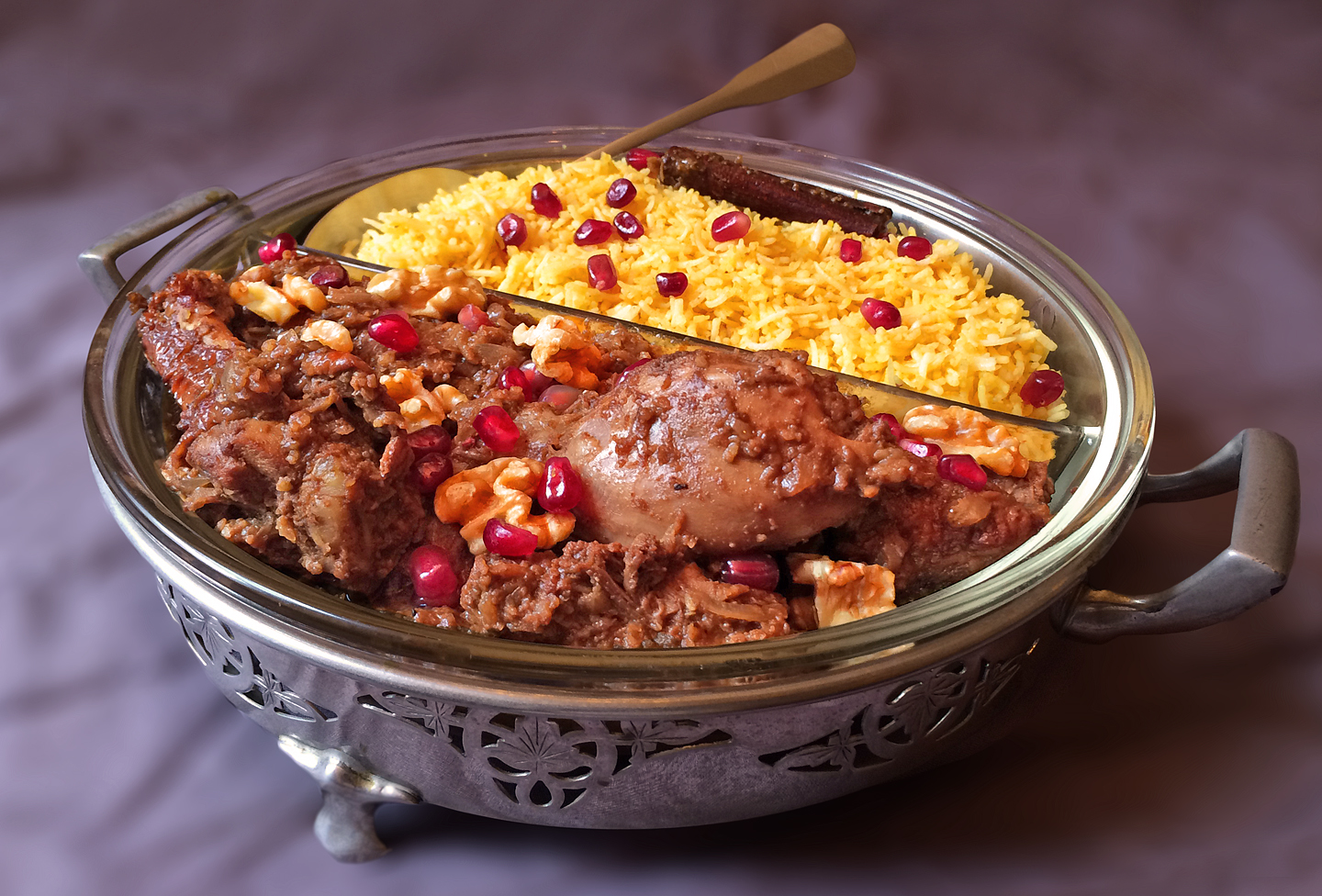(Click on any image to view it in high resolution.)

Don’t get me wrong. I’m not complaining about observing New Year’s Day in January or February or September, but you have to admit that it does seem eminently logical to herald the inauguration of a new year on the first day of spring, doesn’t it?
And that’s exactly what Nowruz is about: literally “new day” in Farsi, it’s celebrated in Iran and the Persian diaspora on the vernal equinox, around March 20. There is a multitude of holiday conventions practiced for Nowruz, some of which harmonize with universal rites of spring including “shaking the house”, a preparatory spring cleaning, and painting eggs in festive colors (sound familiar?) and of course a cavalcade of traditional foods.
Pictured here is my homemade fesenjan, a splendid dish often earmarked for special occasions. Fesenjan is a koresh, a thick stew, sometimes made with chicken, sometimes with duck like this one; the other two essential ingredients are walnuts and pomegranates in some form – my version uses pomegranate molasses although I’ve seen pomegranate juice pressed into service as well. It’s served here with saffron rice in a supporting but essential role. (And that’s my grandmother’s serving dish if you’re curious.)
But fesenjan is distinctly Persian and other cultures commemorate the holiday with very different foods. Stay tuned for more….

Thanks, Rich, for the cultural insight about New Years in other lands. Your grandmother’s serving dish is beautiful as is what is in it!
Thank you, Pauline!
Agrees with Pauline !